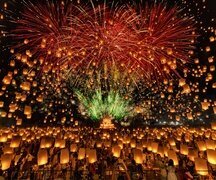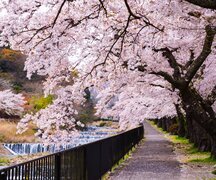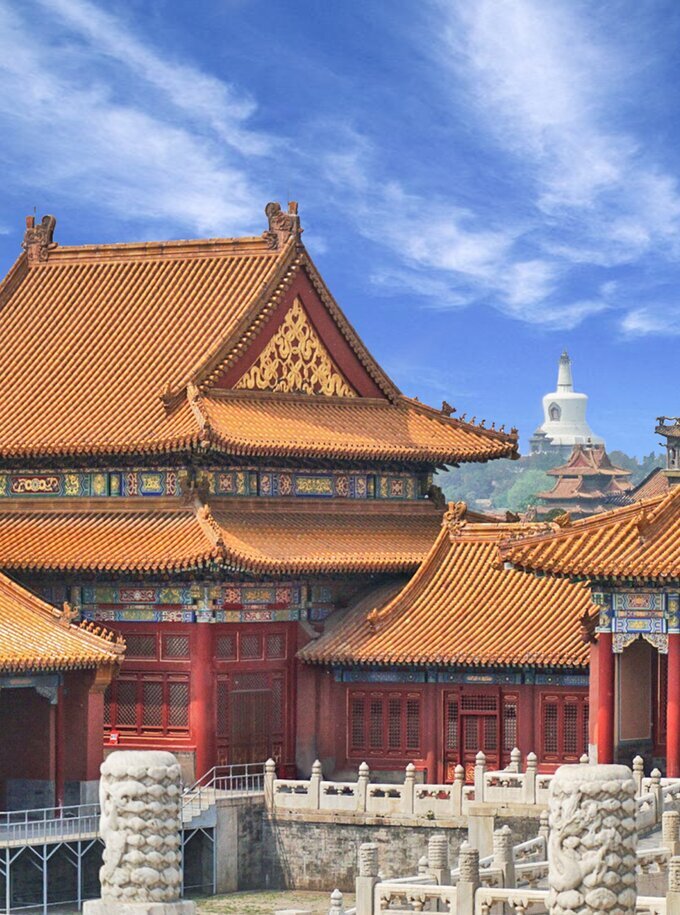When it comes to the best time to visit Thailand, most websites will tell you it's between November and February or through April. That's the peak tourist season. But the truth is, there's no single "best" time. Whether you're looking for perfect weather, fewer crowds, or lower costs, timing can make all the difference.
Having explored Thailand during every season, I can tell you the climate isn't as straightforward as it seems. I've felt a surprising chill in the cool mountains of Chiang Mai while the rest of the country was sweltering. And while I enjoyed calm sunny days on Koh Samui, my friends were stuck in stormy weather in Phuket.
In this guide, I'll help you figure out your own best time to visit, based on five key factors: climate, cost, air quality, crowds, and events. I'll also share my personal take on the best and worst months to go. By the end, you'll have a clear picture of when to visit Thailand.
Best/Worst Time to Visit Thailand: Quick Answer

Best Time to Visit Thailand for Ideal Weather

The best time to enjoy Thailand's most comfortable weather is generally from November to February. During these months, the climate is pleasantly warm, relatively dry, and less humid—perfect for exploring cities, temples, beaches, and national parks without dealing with extreme heat or monsoon rains.
- Northern Thailand (Chiang Mai, Chiang Rai): Daytime temperatures are mild, ranging from 24–28°C (75–82°F), with cooler mornings and evenings. It's ideal for trekking, temple visits, and mountain adventures.
- Central Thailand (Bangkok, Ayutthaya): Warm but manageable weather, mostly dry and sunny—perfect for sightseeing and city tours.
- Southern Thailand (Phuket, Krabi, Koh Samui): The seas are calm and warm, beaches are at their best, and outdoor activities like snorkeling, diving, and island hopping are very enjoyable.
Things to keep in mind: This is peak tourist season, so popular destinations can be crowded and prices higher.
 The nice weather when visiting Grand Palace, Bangkok
The nice weather when visiting Grand Palace, BangkokBest Time to Visit Thailand for Budget Travel
If you're looking for great value and fewer crowds, June to August is your best bet. This is Thailand's low season, when hotel rates can drop by up to 50%, and many tour operators offer significant discounts.
Although it falls during the rainy season, it's still the early stage—rain showers are typically brief and occur in the late afternoon or evening, leaving plenty of time for sightseeing. It's also not as hot as the peak heat of March to May, making outdoor activities more manageable.
(My experience: On one of my trips in late August, I stayed at The Bush Camp—an elephant sanctuary near Chiang Mai—with only six guests and ten elephants. It felt incredibly personal and peaceful. In Ayutthaya, the ancient temples were almost empty—I snapped crowd-free photos all day. That kind of quiet, immersive experience is hard to find during peak season.)
 I got intimate experience with elephant in Chiang Mai Bush Camp.
I got intimate experience with elephant in Chiang Mai Bush Camp. Best Time to Visit Thailand for Festivals
Thailand's festivals are full of light, color, and energy, and the best time to experience them is November to April, when the weather makes outdoor celebrations especially enjoyable.
One of the most memorable experiences is Loy Krathong and Yi Peng in November, when candle-lit baskets float down rivers and lanterns rise into the night sky. Chiang Mai is the most magical place to witness both festivals together.
 Yi Peng Lantern Festival in Chiang Mai
Yi Peng Lantern Festival in Chiang MaiAnother highlight is Songkran (April 13–15), Thailand's lively New Year celebration. Streets everywhere turn into water-play zones, blending joyful chaos with centuries-old traditions. It's one of those rare festivals that feels both cultural and incredibly fun.
You'll also find other festivals worth planning around, such as:
- Chiang Mai Flower Festival, a February celebration filled with floral parades and beautifully decorated floats.
- Chinese New Year, marked by lion dances, lanterns, and temple visits across Bangkok, Phuket, and other major cities.
- Phuket Vegetarian Festival, an October event known for its striking processions and distinctive spiritual rituals.
Tips: Book accommodations and activities well in advance, and plan your itinerary to include festival events if possible.
 Songkran
SongkranWorst Time to Visit Thailand
Rainy Peak: September to October
The rainiest months in Thailand are September and October, generally considered the least favorable time to visit.
Heavy rainfall can cause flooding in cities like Bangkok and Chiang Mai, landslides in mountain areas, flight delays, and rough sea conditions along the Andaman Coast. Island services in places like Phuket and Krabi may be limited or temporarily unavailable, making island-hopping both challenging and potentially risky.

(My experience: I once encountered strong waves during a boat trip in Phuket—even in late August—and it was honestly one of the scariest travel moments I've had in Thailand.)
One exception is Koh Samui and its nearby islands, which are affected by a different monsoon pattern. This region tends to stay relatively dry during this period, with its wettest month usually arriving around November.
Another Time to Avoid
Many websites never mention this, but I'd like to say it clearly: if you're sensitive to air quality—especially if you have asthma or respiratory issues—March is a month to avoid.
It's the peak of Thailand's burning season, which usually starts in February and lasts through early April. Northern Thailand, especially Chiang Mai and Chiang Rai, is the most affected.
You might not be able to see the mountains clearly, the sky often looks hazy, and hotel balconies can be covered in ash. Locals and tourists alike wear masks, and spending long hours outdoors isn't recommended.
What makes it more frustrating is that March is still part of the tourism high season, with high prices and large crowds, yet the air quality is poor, so the tradeoff may not be worth it.
That said, the smoke mostly affects inland areas. If you're planning to spend most of your time on the southern islands, the air is usually much cleaner, and this likely won't be a concern.
Thailand's Weather by Seasons: Cool, Hot, and Rainy

Thailand Cool Season (November - February): Best Weather, but Highest Price

This is Thailand at its most pleasant — sunny, dry, and not too hot. Temperatures range from 22 °C to 28°C (72°F to 82°F). In the northern mountains, especially around Chiang Mai and Chiang Rai, mornings and evenings can feel surprisingly chilly, sometimes dropping below 15°C, so a light jacket comes in handy.
Whether you're temple-hopping in Bangkok, hiking in the north, or relaxing on the beaches down south, everything just feels easier in this weather.
But here's the trade-off: it's also the busiest and most expensive time of year, especially around Christmas and New Year. So if you're coming during this season, book early.
Month-by-Month Highlights
- November – Cool mornings, misty mountains, and the magical Loy Krathong and Yi Peng lantern festivals make Chiang Mai and Chiang Rai especially beautiful this time of year. Just know these festivals draw big crowds, so it's worth planning ahead. Skip Koh Samui — it's still rainy over there.
- December – You'll feel the holiday spirit across Thailand, from night markets in Bangkok to beach parties in Phuket. Chiang Mai is a great spot for a more budget-friendly Christmas getaway — cooler weather, cozy cafés, and fewer tourist traps. Don't miss the CAD New Year Countdown in Chiang Mai — fun and surprisingly well-organized.
- January – Still cool and dry, and things calm down a bit after the New Year rush. It's a sweet spot if you want nice weather without the December surge. Whether you're island-hopping or trekking up north, everything's still in full swing.
- February – The weather begins to shift. It's still dry, but the smoky season may start, especially in the north. Skies turn a little hazier, and temperatures climb to around 29°C (84°F). If Chinese New Year falls in February, expect vibrant celebrations and bigger crowds in major cities.
If Chinese New Year falls in February, cities like Bangkok and Chiang Mai light up with parades, firecrackers, and festive street food — but be prepared for bigger crowds and higher prices in those areas.
Thailand Hot Season (March – May): Quieter Travel, But Prepare for the Heat
 I was at Wat Phra Si Sanphet in Ayutthaya in early Sept.It was hot but peaceful.
I was at Wat Phra Si Sanphet in Ayutthaya in early Sept.It was hot but peaceful.Let's get straight to the point: If you don't mind the heat and prefer fewer crowds, this season might suit you well. But if you're sensitive to heat or traveling with small children or elderly companions, it may not be the ideal time.
Weather:
March to May is the hottest time of year in Thailand. Daytime temperatures often climb above 35°C (95°F), and in some areas even exceed 40°C (104°F). Combine that with high humidity, and places like Bangkok can feel like a sauna by mid-morning. Sightseeing under the sun can be exhausting.
Another challenge is air quality. Northern Thailand, especially Chiang Mai and Chiang Rai, experiences smoky haze from agricultural burning, particularly between March and early April. This can affect visibility and air quality, so it's worth checking the AQI if you're heading north.
Why visit during the hot season?
It's not all bad. This is the low season, which means lower prices and fewer tourists. Hotel rates can drop by up to 50%, especially from mid-April onward.
The biggest highlight of the season is Songkran, the Thai New Year celebration in April. It's a countrywide water fight, and nothing cools you down better. It's fun, festive, and a truly unique cultural experience.
Travel tips:
If you're visiting during this time, pacing is everything. Plan for rest breaks, indoor attractions, and lots of hydration. Be especially careful with kids and older travelers—they're more prone to heat exhaustion.
For a more comfortable experience, consider heading to the islands. Places like Koh Samui, Phuket, and Koh Tao benefit from sea breezes. Mountain areas in the north can also offer cooler evenings—but again, be mindful of the air quality in March and early April.
Month-by-Month Highlights
- March – The hot season begins. Average highs around 33°C (91°F). Thailand sees the worst of the smoky season—check air quality if heading to Chiang Mai or Chiang Rai. A great time for island hopping and diving, especially in the Gulf of Thailand.
- April – The hottest month, often over 38°C (100°F), sometimes reaching 42–43°C inland. It's also Songkran, Thailand's water festival—fun, festive, and busy. Expect crowds and higher prices around the festival.
- May – Still hot, but cloud cover and brief showers bring some relief. This is a shoulder season—fewer tourists and lower prices. A good time to visit if you don't mind a little rain.
Thailand Rainy Season (June – October): Lush Landscapes and Lower Prices
 The vibrant green scenery in rainy season
The vibrant green scenery in rainy seasonFor some, it's the best time to visit Thailand—for others, the worst. But if you're flexible and don't mind some rain, the wet season can be surprisingly rewarding: vibrant green scenery, cleaner air, fewer crowds, and great hotel deals.
Weather:
The rainy season is often split into two phases. From June to August, it's the early rainy season, with predictable weather: short, heavy downpours around late afternoon, often clearing up within an hour. Many days stay mostly dry, and the rest of the time is warm and pleasant.
September to October marks the heavier rainy season. Storms become more frequent and unpredictable, sometimes lasting hours or days. This can cause flooding in low-lying areas and occasional transport disruptions, especially in Bangkok or on the islands.
Daily highs average around 30°C (86°F), and rainfall often cools things off.
Why visit during the rainy season?
This is when Thailand is at its greenest—rice fields glow, waterfalls surge, and jungle landscapes are lush. You'll also enjoy fewer tourists and significantly lower hotel rates (up to 50% off in many places).
Travel Tips:
Flexibility is key. Allow extra time between connections, especially if you're traveling to or from islands. Plan outdoor activities in the morning when skies are clearer, and keep afternoons open for rest or indoor attractions.
Some islands in the Andaman Sea may close temporarily due to rough seas, but the Gulf islands (Koh Samui, Koh Phangan, Koh Tao) usually stay drier and are great rainy season options.
Month-by-Month Highlights
- June – The rainy season begins, usually in short afternoon bursts. Green landscapes return. Fewer tourists, lower prices.
- July – Rain becomes more frequent, but there are still many dry hours each day. Popular destinations like Chiang Mai, Bangkok, and the islands remain accessible.
- August – Among the wettest months, especially in the north and west. Still doable with flexible plans. East coast islands (like Koh Samui) are a good bet for beach time.
- September – Typically the wettest month. Heavy, unpredictable rain and possible flooding in Bangkok and Chiang Mai. Quietest time for travel.
- October – The rains start to ease by mid-to-late October. Cooler, greener, and still uncrowded—a good shoulder season pick before the cool, dry months begin.
Weather in Thailand by Region: Bangkok, Chiang Mai, Phuket, Koh Samui
Bangkok

Best time to visit: November to February
Cool and dry—ideal for visiting the Grand Palace, Wat Pho, Wat Arun, exploring markets like Chatuchak and Chinatown, and enjoying rooftop bars.
What to avoid: September and October bring heavy rain, flooding, and worsened traffic, making walking difficult.
Tips: During the hot or rainy season, stick to indoor spots like the National Museum, Jim Thompson House, Terminal 21, or shaded temples like Wat Saket and Wat Benchamabophit. Food tours and cooking classes are great ways to stay indoors while still experiencing the city. For a quick escape from the heat, head to Kanchanaburi to swim at Erawan Waterfall and stay overnight in a floating house.
Get more information on our page: Best (and Worst) Times to Visit Bangkok
Chiang Mai
 Doi Inthanon National Park
Doi Inthanon National ParkBest time to visit: November to February
Cooler weather and clear skies—great for visiting temples like Doi Suthep, browsing night markets, or hiking in the surrounding hills.
What to avoid: March to May is hot and smoky, with poor air quality.
Tips: Visit during the Loy Krathong Festival and Yi Peng Festival (usually November) for beautiful lantern displays and cultural events—book early! In the hot or rainy season, plan outdoor activities for early morning and explore museums or cooking classes during hotter or wetter parts of the day. Doi Inthanon offers a cooler mountain escape year-round.
See our detailed breakdown: Best (and Worst) Times to Visit Chiang Mai
Phuket

Best time to visit: Mid-November to April
This is Phuket's dry season, ideal for beach days, island hopping, diving, and snorkeling. Calm seas and plenty of sunshine.
What to avoid: May to October can bring rough seas and red flags on beaches, especially on the west coast.
Tip: If visiting in the rainy season, focus on spa days, cooking classes, or island viewpoints between showers.
Check out our full guide: Best (and Worst) Times to Visit Phuket
Koh Samui

Best time to visit: Mid-December to early September
Unlike most of Thailand, Koh Samui's rainy season arrives later, mainly in October and November.
What to avoid: Late October to early December can be very wet with frequent storms.
Tip: If you're looking for beach weather during Thailand's wet season (June–August), Koh Samui is usually your best bet.
Koh Samui's weather is a bit different—get the full scoop: Best (and Worst) Times to Visit Koh Samui
Thailand's Weather and Temperature in Main Cities
| Destination | Jan | Feb | Mar | Apr | May | Jun | Jul | Aug | Sep | Oct | Nov | Dec | |
|---|---|---|---|---|---|---|---|---|---|---|---|---|---|
| Ayutthaya | 🌧 ☀ |
90°F 0" |
93°F 1" |
97°F 1" |
97°F 3" |
95°F 6" |
93°F 7" |
91°F 7" |
90°F 7" |
90°F 11" |
90°F 7" |
88°F 2" |
88°F 0" |
| Bangkok | 🌧 ☀ |
90°F 0" |
91°F 1" |
93°F 1" |
95°F 3" |
93°F 7" |
91°F 6" |
91°F 6" |
90°F 8" |
90°F 13" |
90°F 9" |
88°F 2" |
88°F 0" |
| Chiang Mai | 🌧 ☀ |
82°F 0" |
88°F 0" |
93°F 1" |
95°F 2" |
91°F 6" |
88°F 4" |
86°F 6" |
86°F 7" |
86°F 8" |
84°F 6" |
84°F 1" |
82°F 1" |
| Koh Samui | 🌧 ☀ |
84°F 7" |
88°F 2" |
91°F 3" |
93°F 2" |
91°F 5" |
91°F 3" |
90°F 5" |
90°F 4" |
90°F 5" |
88°F 11" |
84°F 18" |
84°F 10" |
| Krabi | 🌧 ☀ |
88°F 1" |
91°F 1" |
93°F 2" |
93°F 6" |
90°F 7" |
90°F 10" |
90°F 9" |
88°F 9" |
88°F 13" |
88°F 10" |
86°F 8" |
86°F 3" |
| Phuket | 🌧 ☀ |
88°F 2" |
90°F 1" |
91°F 2" |
91°F 6" |
90°F 13" |
88°F 11" |
88°F 11" |
88°F 11" |
86°F 15" |
86°F 13" |
86°F 7" |
88°F 3" |
| Koh Samet | 🌧 ☀ |
91°F 1" |
91°F 2" |
91°F 2" |
93°F 4" |
91°F 8" |
90°F 8" |
90°F 8" |
90°F 8" |
88°F 11" |
90°F 9" |
90°F 3" |
90°F 0" |
FAQ About Thailand Weather
1. What's the wettest month in Thailand?
September. Expect frequent, heavy showers, especially in central and southern regions. Travel is still possible with flexible plans.
2. What are the coolest months?
December and January, especially in the north (Chiang Mai, Chiang Rai), where nights can dip to 15°C (59°F). The south stays warm but pleasant.
3. What are the hottest months?
March to May. Temperatures often exceed 35°C (95°F), with high humidity. Best for beach trips and water-based activities.
4. When is it most expensive to visit Thailand?
November to February is peak season, especially around Christmas, New Year, and Songkran (April). Prices for flights and hotels are highest.
5. When is it cheapest to visit?
May to October is the low season. Fewer tourists mean big savings on flights and hotels—just expect some rain.
6. Is it okay to visit during the rainy season?
Yes. Many days stay mostly dry, and showers usually pass quickly. Have a flexible plan and include some indoor options.
Tour Thailand Your Way with Us
Discover Thailand through our unique tours with award-winning guides and with 1:1 help from a dedicated Thailand expert, every step of the way.
Tell us your interests and needs, and we will create a wonderful trip for you. We are happy to show you the authentic and colorful Thailand.
- 10-Day Essence of Thailand Tour: Bangkok — Chiang Mai — Phuket
- 2-Week Thailand Getaway Tour for Couples: Bangkok — Chiang Mai — Kao Sok National Park — Koh Samui
- More Thailand tours
Get Inspired with Some Popular Itineraries
At Highlights Travel, we create your kind of journey — your dates, your destinations, at your pace. You can have any trip tailor made for your travel.

































